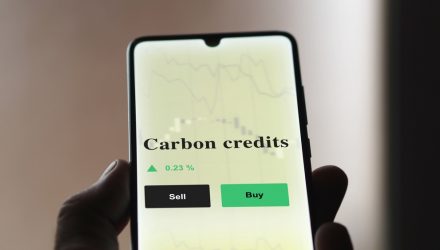Carbon investing continues gaining traction with registered investment advisors and environmentally astute retail investors. Importantly, access to carbon credits in broad-based form has been enhanced thanks to exchange traded funds.
The KraneShares Global Carbon Strategy ETF (KRBN) is one of the ETF pioneers in this space. KRBN turned three years old in July. It is now home to more than $469 million in assets under management, confirming there’s enthusiasm for carbon investing via the ETF wrapper. While KRBN isn’t new, it’s still young and data suggest its best days may lie ahead.
“The Taskforce on Scaling Voluntary Carbon Markets forecasts that in order to meet the climate change targets set forth in the Paris Agreement, the voluntary carbon markets will need to grow 15-fold by 2030 and 100-fold by 2050, from 2020 levels,” according to CarbonCredits.com.
In other words, there’s a potentially lengthy and lucrative runway ahead for broader adoption of carbon investing – a task made more efficient with KRBN.
Making the KRBN Call
One of the issues confounding potential users of carbon credits at the corporate level, of which there are likely to be many, is the fact that the market still needs some refining. That’s not an impossible goal and as it takes shape, more investors could be drawn to the market. That could be a positive for assets such as KRBN because carbon investing in funds is convenient and makes a previously complex asset class more approachable for a broader audience of market participants.
“The final category of funds would be those whose primary holdings consist of carbon credit futures. These funds are the riskiest, as they aren’t diversified at all, but they also directly track the performance of their underlying carbon credits nearly one-to-one,” added CarbonCredits.com.
For advisors and investors who are new to the world of carbon investing, the ETF universe already offers some parallels. Think of long-established single-commodity funds focusing on physical exposure to gold and silver. Although it’s a futures-based ETF, KRBN is somewhat comparable to old-guard commodities funds in that it offers lower correlation benefits.
“Investing in such funds would be analogous to investing in a fund that only holds physical gold, rather than a fund that invests in gold producers and explorers. Though the performance of such a fund would most closely match the performance of carbon credits themselves, that doesn’t necessarily mean they would provide the best return, either, despite their riskiness,” concluded CarbonCredits.com.
For more news, information, and analysis, visit the Climate Insights Channel.

